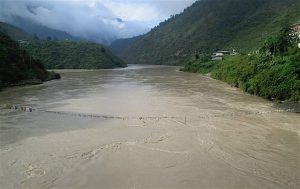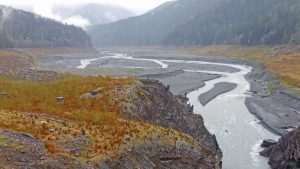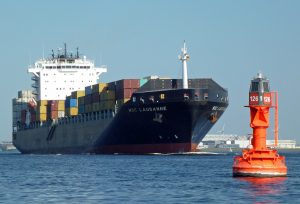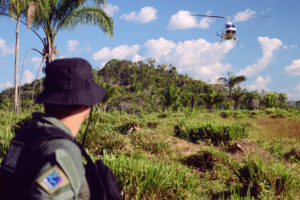“Good morning, sir,” the Nepal Armed Police Force officer stamped his boot on the ground while keeping his right hand at his forehead. The Chinese police officer sitting inside a large building on the Bank of Kerung Khola in Rasuwagadhi—the only active gateway from Tibet to Nepal had no response.
“I want to take my friend inside for a tour, sir,” the Nepali officer said.
Soon a very young looking Chinese police officer came out of the room and asked for something. The Nepali officer thought he was asking for my cap.
‘No no, no, no, Chinese officer repeated a word, ‘Lagaleeta, Lagaleeta, Lagaleeta’. He was asking for my citizenship card, which is called ‘Nagarikta’ in Nepali.
As I handed over my citizenship card, he said, “No, no, no, no, English, English”. The citizenship card was in Nepali, so he asked for my driving licence, which worked. He took my picture on his mobile and said the doors would be closed in ten minutes for lunch, so we had to be back before that. We had only nine minutes to spend in Tibet.
There were around a dozen shops and a few restaurants behind the immigration building. ‘No pictures’ signboards hung everywhere. Inside the building, automatic gates, immigration counters with full-fledged digital system were in place, but without immigration officers or travellers.
We were two minutes late and the doors were closed when we returned. The Nepali officer became nervous, went to the same room where he had received no response earlier, and was scolded this time around. But at least the gate was opened.
Not everybody gets the opportunity to enter Tibet now. My success was the result of the friendship I developed with Nepali security officers over a half-hour chat on the bridge in Rasuwagadhi that connects Nepal and China. “Don’t tell them that you are a journalist,” the police officer who accompanied me warned.
This place will be an exit of the Chinese government’s ambitious Belt and Road Initiative (BRI), previously called One Belt, One Road (OBOR), and also referred to as the New Silk Road. This particular stretch will connect Nepal with all of South Asia as well as Central Asia via the Qinghai-Tibet rail which is just 500 kilometres away from here in Shigatse. China is working to bring trains to Kerung (known as Kyirong/Gyirong in Chinese) – the nearest town to the Nepal border in Chinese territory, lying 24 kilometres away, by 2020.
Chaos at the border

Currently, this is the only available route to enter Tibet from Nepal. After the earthquake in 2015, China decided to close the Kodari route, replacing it with this one, but the infrastructure on the Nepal side is very inadequate.
Hundreds of trucks were queued up waiting for the call to enter Tibet but it was hard to predict when they would be asked to cross the bridge. These trucks travel to Kerung and carry goods from there to Kathmandu – Nepal’s capital.

Less than 100 metres from Nepal’s small security post, with its zinc roof and sheet fence, Rasuwa Fort lies silent. The fort was built by Junga Bahadur Rana — the former Prime Minister of Nepal who invaded Tibet in 1855. Just next to the Fort, severely damaged by the 2015 earthquake, Nepal’s revenue office has crumbled to pieces.
A group of drivers sat drinking tea in a temporary stall, their faces full of dissatisfaction, anger and worry. “It’s been two weeks and I have been waiting to enter and hoping to get through today, if not tomorrow,” said Rana Prasad Lamichhane, who owns and drives a truck. This has become a regular wait for more than a year.
The local authorities are seriously frustrated by the Nepal government’s lackadaisical attitude to managing the only exit to Tibet. The first word the officers utter is against their own government. One security officer used every curse word in Nepali to express anger against the government’s poor management.
“Look, those Chinese across the border, how well managed they are, we don’t even have a toilet, let alone other facilities,” he said, speaking under the condition of anonymity.
A couple of weeks ago one security officer was seriously injured in the leg after a boulder rolled down from an earthquake-weakened cliff. Remains of the earthquake-induced landslide were clearly visible. “A few dead bodies are still inside these remains, it’s a torture for us to get deployed here,” he added.
Nepal’s rail fantasy, a dream that hasn’t come true
When the British ruled India they established the first rail service in Nepal in 1927 on its south-eastern border to transport timber from Nepal to India. After the timber was gone, the old-fashioned rails started carrying people for decades before it was shut down in 2014. There was no real development after British times, beyond Nepal signing the Trans Asian Railway Network agreement in 2006. Currently the country has no functioning rail service. But there are big plans on paper.

Nepal government’s 20-year railways development plan aims to build 4,000 kilometres of rail services that includes linking tracks from the northern Tibetan plateau in China to the flood plains of the Ganga in India.
At the centre of this is a new seven-storey building in Kathmandu where the government has just set up a railways department. Prakash Upadhyay, the spokesperson of the newly established Railway Department, explained what the future would look like. “We are doing a detailed study of east-west railway. Out of six rail linkage tracks provided by India, two will be in operation in southern Nepal probably next year. We have written to Chinese government to select an appropriate company to study Kathmandu to Kerung railway which we are hoping to start soon,” he said.

In a small landlocked mountainous country sandwiched between two giant economies, rails were never a priority of the government. Many debates started on this subject after China extended its rail network through the tough mountainous terrains in Tibet up to Shigatse and announced its plan to extend it to the Nepal-China border by 2020. “I don’t know about the Indian side but if Chinese say, they do it. They will bring the rail to Kerung,” said Santosh Nepal, a local truck driver in Rasuwagadhi who frequently drives to commutes to Kerung in China. He has seen the work that the Chinese are doing, and is impressed.
While locals on the northern border seem very confident about China bringing rail up to Nepal’s border, Nepali officials are equally hopeful that the rail dream will turn into reality. “We were too focused on roads in the past but linking northern mountains with the southern plains via rail is not an impossible task and we are confident that this will become reality soon,” Upadhyay said. “Let me tell you one thing, railways development has never been such a priority of Nepal government.”
While railways on the northern border are on the horizon, rails in the southern border are scheduled to operate by next year. “We have been constructing new rail tracks in southern bordering area and it is very likely that the country will have effective rail service by early next year,” Upadhyay was confident. These cross-border rail services will link Nepal’s planned east-west railways to the railways from Kerung to Kathmandu.
OBOR yet to hit the ground in Nepal
Three kilometres from Rasuwagadhi in Timure, a rented flat is Nepal’s current immigration office where Chinese visitors receive a visa on arrival. As many Chinese could not fill up the form, officers have arranged a register to maintain records where an officer writes details about the person getting the visa. “There is huge prospect of tourism through this. Chinese are travelling to Nepal but our government lacks seriousness. I don’t need to say anything as you have already seen the way we have been handling the border” said Khub Raj Shrestha, the assistant immigration officer in Timure.
A group of Chinese tourists entered the room. There was not enough space for all of us, so we left. According to Shrestha, about 1,300 Chinese tourists crossed this border in April alone but the pace will slow down until September due to the monsoon. “We have also heard in media that the plans are big but, to be honest, preparations on the ground haven’t started yet,” he added.

“I don’t know if they are bringing rail, nobody tells us anything. We have heard that it has come to Tibet but I haven’t been to Tibet for years,” said Norcho Gurung. She operates a small hotel on the first floor and has rented out the second to the government for use as the immigration office. A group of Chinese tourists came to use her toilet as the officers lock the one on their floor. “It has been hard to clean up for so many people,” she said angrily.

Broken diplomacy, will the rails fix it?
“If Nepal is connected to the Chinese railway network, it can be linked with Europe via land route,” tweeted Leela Mani Paudyal, Nepal’s ambassador to China. “It [is a] happy moment, Memorandum of Understanding (MoU) between China and Nepal signed.”
But implementing what has been signed with Chinese authorities is a herculean task, as Nepal has to take its southern neighbour India into confidence. Nepal’s relations with India have been complicated since the promulgation of the new constitution in 2015. India has reiterated that dissenting voices from the southern plains – on citizenship and other issues – need to be included.
A blockade linked to these protests led to the then Nepali Prime Minister KP Oli to ink deals with China on various issues, including a historic transit trade treaty. Agreed in principle during that time, the OBOR was officially endorsed by the Nepal government in May 2017. “China may have hidden interest behind OBOR but we shouldn’t hesitate to take advantage of this initiative for that reason alone,” said Rabindra Adhikari, Chair, Parliamentary Committee on Development.
India has its own issues regarding BRI/OBOR especially with the China Pakistan Economic Corridor (CPEC) which India sees as violation of its sovereignty issue as the project operates in Pakistan administered Kashmir. India attempted to convince Nepal not to join the initiative, but both Bangladesh and Nepal have agreed to be part of it despite India’s resistance. Many in Nepal think that the effort India has been applying is futile. “There is no point in India’s sniping and nit-picking at the Chinese OBOR project and pressuring neighbours like Nepal not to sign up to it. It only makes India look mean, spiteful and backward-looking,” wrote Dipak Gyawali, Nepal’s former water minister, in his column.

Nepali technocrats have another reason to be hopeful that India will eventually join the mission. “Technocrats in India know the value of linking Kerung in China to the Indian rail network as it is the most appropriate route that links the middle Trans Asian railways,” said Prakash Upadhyay.
Among three rail networks under Trans-Asian Railways (TAR) from Asia to Europe, Nepal falls on the southernmost. But it is also a major link route to the middle network from Shanghai to Moscow. The southern network links Hong Kong and Singapore to Spain via India and Iran. “We are strategically in a very important geo-location and can act as bridge between two major trans-Asian railway networks,” Upadhyay added, expressing the hope that this will mean that India and China will link their networks sooner or later.
Though India and China are at loggerheads on OBOR, politicians in Nepal are optimistic about the north-south connection. “Once a rail connection with China is established, Nepali goods can be transited to international markets through the Eurasian transport network, which is vital if we are to overcome our geopolitical constraints. But all of South Asia can benefit from this network,” added Rabindra Adhikari, Chair of the Parliamentary Committee on Development.
Challenges emerge as happiness blooms
Though rail and roadways have already crossed the lofty mountains on paper, many challenges lie ahead. Landslides are not uncommon on the geologically fragile and earthquake shaken route from Kerung. “There are definitely issues around it but it can be handled, it needs rigorous planning and investments accordingly,” Upadhyay said. As China is interested in investing, financial constraints are not as much of a problem as technical ones, according to the officials.
According to the railways department, it is likely that about 90% of the Kathmandu-Kerung railway would be either over bridges or through tunnels. “We have technical challenges on our side but it is not impossible to connect Kathmandu with Kerung, However, it is not as easy as linking Kathmandu with Birgunj in southern border,” Upadhyay said.

The rail and the road from China pass through one of Nepal’s most popular tourist destinations — the Langtang National Park. Nepal is often cited as an illegal trade corridor of wildlife body parts from South Asia to China and vice-versa. Park officials are worried about the railway plans. “We are aware and bit worried. This year we are planning to establish a separate wildlife check point at the border as an effort to curb the problem as mobility has already increased through this route,” said Yubraj Regmi, the Chief of Langtang National Park.

Due to the political turmoil, Nepal couldn’t hold local body elections for the last two decades resulting in serious communication gaps between the government and local residents. Newly elected politicians are hoping to bridge the gap and excited to cooperate with the national government on agendas like BRI/OBOR. “I agree there has been very little information or discussions with the local communities regarding it, but we have come through people’s mandate recently, we are all set to play our role,” said Kaisang Tamang, the mayor of Gosainkunda Rural Municipality adjoining the Chinese border.
[author_card]
![<p>A truck preparing to enter into China at Nepal’s border to Tibet in Rasuwagadhi [image by: Nabin Baral]</p>](https://dialogue.earth/content/uploads/2017/07/Nepal2-300x200.jpg)








